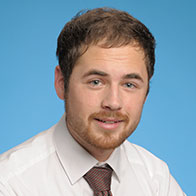A More Holistic Approach in L-PBF Process Optimisation
Background
The technology behind metal additive manufacturing (AM) has advanced rapidly over the last ten years, demonstrating a significant potential to reduce the cost and improve the efficiency of aerospace components. With improvements to design freedom and light-weighting via topology optimisation as well as improved buy-to-fly ratios and reduced tooling costs, there has been a positive impact on the carbon footprint and waste from manufacture. H2020-EU “PASSPORT” project led by TWI conducted a detailed characterisation of AlSi10Mg components made by laser powder-bed-fusion (L-PBF), also known as selective laser melting (SLM). An important aspect of the project is to apply optimised process parameters in multiple vendors’ SLM machines. This is a challenging task by itself as different SLM machines using specific laser characteristics (i.e. laser focus diameter, continuous or pulsed energy deposition mode) use process parameters that cannot be directly transferred into other machines featuring laser systems with different characteristics. Limitations of typical SLM design parameters could not satisfy PASSPORT demands in terms of a universal process optimisation methodology independent of SLM machine used. The need of a more holistic approach using novel design parameters was identified.
Characterisation of AlSi10Mg components made by Selective Laser Melting
Overview
This case study presents a novel design approach developed at TWI to implement the PASSPORT solution in different vendors’ SLM machines. This approach consisted in using the power factor and specific point energy to characterise the SLM process. PASSPORT leveraged TWI unique numerical modelling and process monitoring for developing a more holistic process optimisation solution. TWI has been investigating geometry-specific process parameters to enable a near-uniform thermal history based in the process specific point energy.
Objective
To develop state-of-the-art, optimised process parameters that vary with local part topology and geometry characteristics to ensure high quality AlSi10Mg components.
The PASSPORT project seeks to achieve this through the development of state-of-the-art, ambitious, analytical software in order to remove the barriers associated with transferring process parameters between different SLM systems.
 Fig 1. L-PBF process. Laser-material interaction
Fig 1. L-PBF process. Laser-material interaction
 Fig 2. ESP – PF curve for L-PBF of AlSi10Mg alloy
Fig 2. ESP – PF curve for L-PBF of AlSi10Mg alloy
Solution
In order to reach the stated objective, the PASSPORT project used a unique laboratory set-up to undertake a detailed characterisation of AlSi10Mg selective laser melted (SLM) parts.
With the use of advanced simulations, the project sought to understand and quantify the relationship between scan strategies and part attributes. These optimised process parameters could then vary according to local part topology and geometry characteristics to ensure quality through homogeneous mechanical properties, high density and a smooth build surface.
This required the production of a bespoke stand-alone process parameter selection software solution for AlSi10Mg SLM parts, which could communicate with different SLM machines using optimal processing windows with holistic energy maps.
The desired outcome of this work was to improve the time-to-market for SLM parts by removing cost and time-intensive optimisation processes for SLM builds.
 Fig 3. Topology optimised L-PBF component
Fig 3. Topology optimised L-PBF component
 Tyler London
Technology Fellow / Section Manager – Numerical Modelling and Optimisation
Tyler London
Technology Fellow / Section Manager – Numerical Modelling and Optimisation
Tyler is responsible for computational engineering activities at TWI: developing mathematical models and applying engineering analysis techniques to support R&D, consultancy, product development, and failure investigation.
Tyler’s main areas of focus are related to manufacturing process simulations, fracture and fatigue assessments, and numerical optimisation. He is a Chartered Engineer, Chartered Mathematician, Chartered Scientist and NAFEMS-certified Professional Simulation Engineer. Tyler supports multiple national and international codes and standards including the UK Nuclear structural integrity code R6 (weld modelling guidelines committee), British Standard 7910 (strain-based design and assessment committee), EN 13094 (FEA committee), and the NAFEMS Working Group on Manufacturing Process Simulation. Tyler has published more than 40 journal articles and conference papers and was part of TWI’s team that received first prize for residual stress predictions in the NIST International AM Benchmark competition.
}